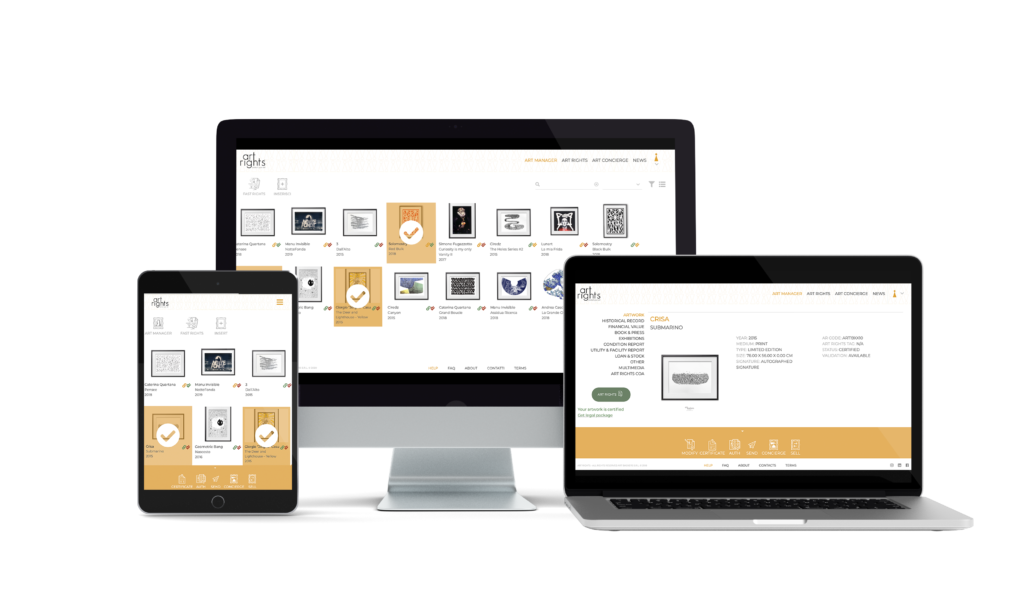2021 Art Basel Global Market Report
The art market is experiencing the worst crisis since 2009. Let’s see the data in the latest Art Basel & UBS Global Art Market Report
“All market segments experienced declines last year, creating the largest recession in the global art market since the financial crisis of 2009” , so explains Noah Horowitz, director of Art Basel America in the introduction to the Art Basel & UBS Global Art Market Report 2021, as written each year by economist Clare McAndrew, founder of Arts Economics.
Now in its fifth edition, the Art Market Report 2021 shows a strongly changed scenario compared to 2019 due to the consequences derived from the pandemic.
With the loss of physicality and the widespread economic crisis, the global art market has declined by 22% and is now worth $50.1 billion.
Although all major art markets, the U.S., U.K., and China, experienced declining sales, these markets continued to account for the majority (82%) of global sales value in 2020.
While the drop in sales was inevitable, the crisis also provided the impetus for change and restructuring in the art system, which in 2020 invested like never before in digital innovation and increased online sales.
Digital business reached a record $12.4 billion, accounting for 25 percent of the market compared to only 9 percent in 2019.
It’s no surprise, then, that galleries, trade shows and auction houses have diverted more resources to IT, with spending increasing 80% year-over-year to $3.5 billion.
The web metrics included in the report clearly show the efforts to attract more traffic to their websites and the benefit of having an integrated digital strategy with the major marketplaces for art.
But let’s look at how the global art system has changed in detail.
ART GALLERIES
Art galleries experienced a sales decline of $29.3 billion, or 20% over 2019. Maintaining relationships with existing customers (70%), investing in digital innovation and participating in online art fairs (54%) were their top priorities enough to drive an increase in online sales from 13% to 39%.
Auction houses had mixed results, increasing online sales 36% to $3.2 billion, while public sales results fell 30% to $17.6 billion.
Total auction sales, including public and private, are estimated to have reached $20.8 billion, and 81% of the value of sales were driven by postwar and modern art. Notably, China surpassed the United States to become the largest auction market, with a 36% share.
The most purchased works online were those valued between $5,000 and $250,000.
ART FAIRS
Of the 365 art fairs planned for 2020, 61% were cancelled and 37% held live events, while 2% held hybrid events. Of 138 art fairs, 62% offered a digital version of their fairs in 2020.
Fair sales accounted for only 13% of gallery revenue. Nonetheless, online fairs have attracted the interest of high net worth (HNW) collectors, with 45% having made purchases through this channel and over 80% of them well prepared to replicate again this year.
COLLECTORS
During the pandemic, interest in art collecting grew 66%, especially among Millennials, more than a third of whom (38%) spent over $1 million compared to 17% of Boomers.
81% of collectors preferred to buy from their trusted gallery, while 54% preferred to buy at auction and 45% preferred to buy at online fairs.
In 2020, 90% of HNW collectors visited an OVR art fair or gallery and 72% felt it was important that a price was posted when searching for art for sale online.
Price transparency has been an important aspect driving the success of online sales.
According to most collectors, making the price of works transparent has been key to gaining more confidence in the online marketplace, buying works and attracting new collectors.
Female collectors are on the rise, outpacing their male counterparts. Their average spending is up 13%.
However, the Report just published does not take into account the revolution recently triggered by the Crypto Art market and the sale of Beeple’s work for Christie’s on March 11, 2021.
Who knows how the next report will change, considering the disruptive force with which NFTs (non-fungible tokens) are creeping more and more into the art market
And you, are you ready to learn how the market will evolve in 2021?
Photo Credits: Art Basel






